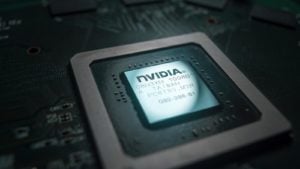If you’re looking to build a portfolio of stocks to buy with just $5,000, the advent of fractional share ownership has made it a whole lot easier.
Google the words “fractional share portfolios,” and you get 527,000 results with everything from reviews on seven of the best fractional share investing brokerages to links to some of the leading players in this burgeoning area of the markets.
Many think of Robinhood when they think fractional, but the truth is almost every major online broker in this country’s got some offering or service.
Heck, I can remember years ago, when FolioFN was the only game in town. Launched in 2000, it was acquired by Goldman Sachs (NYSE:GS) in May 2020. FolioFN’s self-directed accounts are scheduled to be transferred to Interactive Brokers (NASDAQ:IBKR) early in 2021.
In the meantime, for those who don’t want to do the work of constructing a $5,000 portfolio of stocks to buy, here are 10 recommendations to help get you started.
- Alphabet (NASDAQ:GOOG, NASDAQ:GOOGL)
- Tesla (NASDAQ:TSLA)
- Nvidia (NASDAQ:NVDA)
- SVB Financial (NASDAQ:SIVB)
- Roku (NASDAQ:ROKU)
- Berkshire Hathaway (NYSE:BRK.A, NYSE:BRK.B)
- Dollar General (NYSE:DG)
- Apple (NASDAQ:AAPL)
- Williams-Sonoma (NYSE:WSM)
- Thor Industries (NYSE:THO)
Their share prices will add up to $5,000 or less. To make things interesting, all 10 stocks must have share prices exceeding $100.
Stocks to Buy: Alphabet (GOOG, GOOGL) $1,740

It’s funny, I had intended to include Amazon (NASDAQ:AMZN) in my list of 10 stocks to buy, but given I was limiting my names to those companies with shares prices greater than $100, the e-commerce giant’s $3,166 share price would have made it awfully hard to fit nine more under $5,000.
So I went with Alphabet, a company I didn’t write about at all in 2020, but helps me achieve my task.
InvestorPlace’s Mark Hake recently suggested that rising ad sales make it an attractive investment in 2021. My colleague compares Google to the valuations of Apple, Microsoft (NASDAQ:MSFT), and Amazon. He reckons that Google should have a similar valuation to the three companies at $1.43 trillion or 6.7 times sales.
As I write this, Google’s market capitalization is $1.18 trillion, 17% below Hake’s simple calculation, which puts its share price at $2,112 per share.
I like the upside.
Tesla (TSLA) $845

The second-highest share price in our $5,000 portfolio, we can thank Elon Musk for doing a five-for-one stock split in August 2020. Without it, TSLA would take up 86% of our investment capital.
I’m an unabashed Tesla fan, so I’m not going to give you reasons why the valuation is over-the-top, although there’s no question it puts all the other large car companies to shame with its $810 billion market cap.
InvestorPlace contributor Matt McCall recently gave investors some wise advice regarding the electric vehicle (EV) maker. McCall believes that rather than griping about the price you have to pay for its shares, embrace the fact that even the mighty Tesla has corrections, so buy like crazy on the rare occasion that it happens.
To illustrate his point, McCall references its pullback in September 2020, shortly after its stock split. On Aug. 31, it was trading just under $500. In a week, it fell 34% after Tesla was left off the annual additions list for the S&P 500.
Ultimately, Tesla was added to the index on Dec. 31. As money managers added TSLA to their portfolios, it moved even higher.
Nvidia (NVDA) $528

If you’re one of the lucky investors who joined the Nvidia bandwagon five years ago when it was trading around $26, you’re sitting on an annualized total return of more than 79% through Jan. 13.
It’s crazy to think that things can get any better for NVDA shareholders over the next five years. Still, they actually could, given the growth in gaming, cloud computing, and artificial intelligence.
As my InvestorPlace colleague, Faizan Farooque, recently stated, you most certainly won’t be buying Nvidia if you’re a value investor — it trades at 45 times its forward earnings, far higher than many of its peers — but when it can grow sales at 50% a quarter and continue to beat analyst expectations, it most certainly deserves a premium valuation.
In June 2019, I argued that Nvidia’s free cash flow made it a great stock to buy on dips. At the time, it had lost about half of its value over nine months — October 2018 to June 2019 — and was trading around $145.
Some 18 months later, it’s up almost four-fold and generating more than $4.2 billion in 12-month free cash flow.
Buy some now and wait for the next big dip. It’s bound to happen sooner or later, no matter the near-term prospects.
SVB Financial (SIVB) $465

I’m not going to say too much about SVB Financial because it’s one of those bank stocks to buy that you have to get to know for yourself to understand why it’s so special.
You wouldn’t think this was the case by the analyst coverage of its stock. At the moment, 21 analysts cover SIVB, with eight rating it a buy and 12 a hold with an average price target of $424.49.
Sure, it’s come a long way over the past year compared to its peers — it has a one-year total return of 74.2% — but that’s because investors recognize that the bank’s laser-like focus on providing lending, asset management, and banking services to innovators and entrepreneurs will always be in demand.
Recently, it announced that it would pay $900 million to buy Boston Private Financial Holdings (NASDAQ:BPFH) for a combination of cash and stock. The Boston-based private bank specializes in wealth management and other banking services. Together, SVB Financial’s wealth management business will have almost $18 billion in assets under management.
Continue to ignore SIVB at your peril.
Roku (ROKU) $418

The streaming platform has gotten off to a hot start in 2021, up 26% year-to-date and more than 205% over the past 52 weeks.
Roku and HBO Max parent, Warner Media, buried their longstanding disagreement recently by announcing that the streaming service would be available on Roku as of Dec. 17, 2020. By getting a spot on Roku, HBO Max is now on all the major over-the-top platforms.
“We believe that all entertainment will be streamed and we are thrilled to partner with HBO Max to bring their incredible library of iconic entertainment brands and blockbuster slate of direct-to-streaming theatrical releases to the Roku households with more than 100 million people that have made Roku the No. 1 TV streaming platform in America,” Scott Rosenberg, SVP of Roku’s platform business, said in a statement.
The key part of the above statement is that Roku believes that all entertainment will eventually be streamed. I couldn’t agree more.
That’s why I recommended ROKU stock in December 2017 and still recommend it among stocks to buy in 2021.
Berkshire Hathaway (BRK.A, BRK.B) $235

I recently read an article about the reasons why Warren Buffett failed in 2020. This kind of analysis of the Oracle of Omaha has been going on for years, possibly as long as Buffett’s been investing in stocks to buy.
Yes, Berkshire Hathaway severely underperformed the S&P 500 in 2020 — up 2.5% versus 16.5% for the index — but I’ve always believed that the biggest boost to BRK stock will come when the holding company has to be methodically wound down due to the passing of Buffett and Charlie Munger.
Consider that its equity portfolio, which is massive at $271 billion, represents just one-third of Berkshire’s assets at the end of September 2020. I can assure you that the true value of the $418 billion or so in privately-owned assets on its balance sheet is worth far more than this.
When the time comes to wind it down, the board will do what’s necessary to ensure fair value is obtained for every business. It’s possible the process could take a decade or more.
When people say that Warren Buffett has lost his touch, they forget that the final tally has not been given. Not by a longshot.
Dollar General (DG) $213

It’s not a secret that Dollar General caters to customers that don’t have a tremendous amount of disposable income. It probably also doesn’t come as a surprise that its employees aren’t flush with cash, so the fact that it will pay those of its 157,000 employees who get a vaccine four hours of pay is noble.
And smart business.
“‘We do not want our employees to have to choose between receiving a vaccine or coming to work,’ Dollar General (DG) said in a press release, noting that its hourly workers face hurdles to getting vaccinated, such as travel time, gas mileage or childcare needs.”
If there’s a retailer that has done well during Covid-19, Dollar General would have to be at the top of the list.
In early December, Dollar General reported Q3 2020 results that included 12.2% same-store sales growth and a 62.7% increase in earnings per share. As a result, it’s passed on a total of $173 million in 2020 for employee appreciation bonuses.
As it continues to open more stores while simultaneously growing its gross margins, the fact that it remembered that its employees are the ones who deliver this good fortune to shareholders is a big reason why DG stock will continue to move higher in 2021.
Apple (AAPL) $130

Most of the talk around AAPL stock right now revolves around its long-simmering Project Titan and its efforts around delivering its own autonomous electric vehicle.
The Verge recently reported that Apple held discussions in 2020 with Canoo (NASDAQ:GOEV), the EV startup using a platform based on a skateboard to provide a much better cabin design for its future vehicles.
Canoo apparently just wanted some investment capital. Apple, on the other hand, was thinking more about acquiring the business and integrating it into its existing work in this area.
The two didn’t come to an agreement. Canoo went public and Apple’s now working with Hyundai (OTCMKTS:HYMTF) on getting a self-driving EV to market by 2024.
Wedbush Securities analyst Dan Ives recently suggested that Apple could be worth $3 trillion by sometime in 2022 due to strong iPhone 12 sales. He projects it could sell as many as 250 million in 2021.
“If Apple continues to execute at this pace, a $3 trillion market cap could be on the horizon over the 12 to 18 months,” Ives is reported to have said.
As I write this, it’s at $2.2 trillion.
Williams-Sonoma (WSM) $125

Several news outlets reported that the retailer’s CEO, Laura Alber, sold some Williams-Sonoma stock just before Christmas. Don’t be alarmed; it was only 15,000 shares or 3.5% of her total holdings. And it was part of her Rule 10b5-1 trading plan started in September 2019.
As I always like to say, even wealthy CEOs have bills to pay.
Over the past year, Williams-Sonoma stock has delivered a total return of 61.4% for its shareholders, including Alber. That’s double the returns of the specialty retail sector as a whole and three times the entire U.S. markets’ performance.
In June 2016, I called WSM one of the best retail stocks to buy due to its excellent omnichannel experience. Going on five years later, nothing’s changed about that assertion.
During Covid-19, business at the retailer has been full-speed ahead. Here’s what I said about it in December:
“It’s got a business that’s ideally balanced between online and brick-and-mortar sales. In the second quarter, it generated 76% of its sales online; in Q3, due to the novel coronavirus constraints, its online sales accounted for 70% of its total revenue — while growing by almost 50% over last year– and that’s during a pandemic,” I said on Dec. 9.
“More importantly, its Q3 profits were through the roof — up 151% to $2.56 a share thanks to significantly higher margins — and that was only through Nov. 1. It doesn’t include Black Friday and Cyber Monday.”
The world’s going digital, and that’s good news for Williams-Sonoma.
Thor Industries (THO) $105

There is no question that 2020 was good for recreational vehicle manufacturers such as Thor Industries, as people young and old sought the great outdoors, away from the maddening, Covid-19 crowd.
The problem for investors who’ve followed the RV industry for any length of time is that the good times never seem to last. In the case of the novel coronavirus, once vaccines make humans comfortable with packing together in large crowds, the great outdoors won’t be nearly as enticing as Paris or Australia.
That being said, the latest push into RVs may be coming from a sub-set of consumers who might actually take to the open road.
“All dealers are reporting a high mix of first-time buyers as evident by lack of trade-in units,” said Wells Fargo analyst Tim Conder in a July 15, 2020 note. “Dealers are saying as high as 80% of customers are first-time buyers … vs. the typical 25% mix. The pandemic is driving the purchase decision for new-entrants.”
If even half of those first-time buyers stick around long enough to upgrade to a bigger or better model, Thor Industries might not have to worry about the eventual downturn.
To me, THO is one of the perfect stocks to buy for the long haul, buying more whenever it corrects by more than 5-10%.
On the date of publication, Will Ashworth did not have (either directly or indirectly) any positions in the securities mentioned in this article.
Will Ashworth has written about investments full-time since 2008. Publications where he’s appeared include InvestorPlace, The Motley Fool Canada, Investopedia, Kiplinger, and several others in both the U.S. and Canada. He particularly enjoys creating model portfolios that stand the test of time. He lives in Halifax, Nova Scotia. At the time of this writing Will Ashworth did not hold a position in any of the aforementioned securities.
